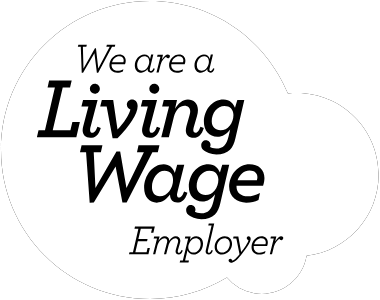As climate change invades every corner of our lives, demanding ever more thoughtful choices, it should come as no surprise that gardeners are turning their cultivation skills to the soil itself rather than just what grows in it, and sustainability PR agencies like Wilful are right behind this change.
In fact, in terms of bragging rights, being really good at making compost is starting to rival being a great sourdough home baker with a jar of bubbling starter proudly on show. As the trend takes hold, we are seeing sustainability PR in action.
As a living ecosystem, soil is on the endangered list. Years of intensive agriculture and use of artificial fertilisers and pesticides have starved and poisoned the soil microbiome – the billions of microbes and fungi that help plants thrive. Composting isn’t a new idea, but most of us have reached for a bag of peat in the past rather than try to enrich the soil using what is freely available. Compost heaps and their close relatives like mulch, are shifting from being thought of as messy and not very attractive areas of the garden to being part of an aspirational lifestyle.
And just as with baking, there are a handful of professionals who are letting the rest of us into their secrets of how we can tap into the naturally present fungi and bacteria all around us to get things started. Through books, on screens and podcasts, these experts – and their sustainability PR machines – are sharing their expertise so that we can have a go at home. My new fan girl crush is Marion Boswall, a professional landscape gardener who has recently published ‘The Kindest Garden’ (Frances Lincoln 2025). She has artfully transposed a mass of technical information on regenerative gardening practices and mixed in an alluring vision of a more natural and nurturing way of gardening into an accessible and practical book.
As a sustainability PR agency, we first came across regenerative agricultural practices a few years ago while working with the global agri giant, Olam. The big food companies have long known that in order to build resilient future supply chains for products like cocoa and coffee they needed to understand how to protect and enhance the conditions in which they grow, helping growers figure out how to adapt to temperature increases and droughts.
What’s really interesting about this work is that it turns out, that to be really effective, it has to be future proofed and attractive for the growing communities too; if the livelihoods don’t stack up against what the cities have to offer, there’s no next generation of farmers to work the land to ensure continuity. This is as true in the UK as it is in Cote d’Ivoire, and thanks to efforts like Clarkson’s Farm, we now better appreciate just how hard and how complex it is to be a responsible food producer.
The holistic approach to growing stuff, be it gardens or food, benefits all life on land, not just us humans – looking after the soil is good for biodiversity. If the soil is healthy, there are worms and insects to feed the birds, amphibians and small mammals. Thinking about eco-systems means incorporating water too in the way that land is planned and managed, an area that this book looks at in some detail. If lockdown taught us the benefits of being out in nature for mental health and wellness, the growing appreciation of the ‘wood wide web’ is helping us be curious about how plants communicate, sharing resources even warning each other of fire and disease.
In the book, Marion doesn’t shy away from any of these bigger themes making it a really satisfying read that draws together many contemporary threads. She offers a useful introduction that sets out a definition for regenerative gardening and offers top ten insights for regenerative gardeners. Part one tackles relationships between the different elements in the garden, starting with soil, water and ecosystems; moving onto materials renewable energy and resilient planting. Part two is unusual and welcome in a gardening book as it invites us to measure our impact, asking what can we assess in our own gardens?
The final section, Part three is about connection exploring how gardening for nature can benefit ourselves and how community can be built through gardening.
Still my favourite section is how to make compost, extracts and tea. With this book in hand, you could soon be supplementing your tea making repertoire with a new horticultural recipe made with a hessian bag full of compost, whisked and aerated with a handheld drill to encourage the microbes. This sums up the book for me; an invitation to afternoon tea in the garden lays down a subtle challenge that after reading it, things will never be quite the same – and all the better for it.






